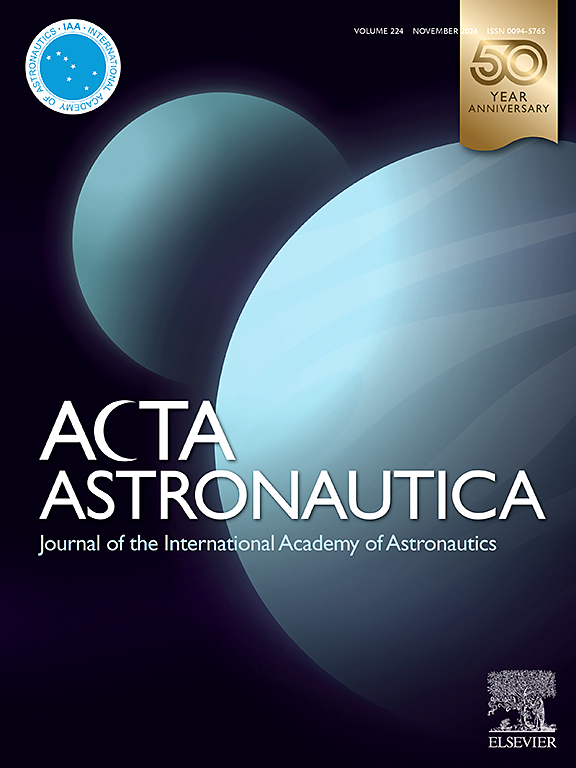Gravitational influence of thermally induced sunshield deformation of TianQin satellites
IF 3.1
2区 物理与天体物理
Q1 ENGINEERING, AEROSPACE
引用次数: 0
Abstract
The TianQin mission aims to detect millihertz gravitational waves in high geocentric orbits using inter-satellite laser interferometric links and drag-free control. However, solar thermal noise in the detection band and significant variations in solar flux can affect the residual acceleration noise of the free-falling test masses through the gravitational force from the satellite itself. In this paper, we focus on studying the sunshield assembly of the TianQin satellite, which includes a solar insulating combination of the sunshield and the satellite’s top plate. We employ an integrated simulation that combines thermal, electrical, structural, and gravitational analyses to show how solar-induced thermal expansion of the sunshield affects the self-gravity on the test masses during TianQin’s 3-month observation windows. Our findings indicate that thermal deformation of the sunshield ranges from 2.0 to 5.3 mm. The results show that the static self-gravity induced accelerations from the sunshield assembly along the sensitive axis of the TM under both cold and hot cases are approximately . Additionally, solar-induced thermal noise in the sunshield assembly contributes to a self-gravity fluctuation of about at 1 mHz, which satisfies the self-gravity requirements. These results provide useful references for future research on the self-gravity effect and strategies for self-gravity mitigation in similar projects.

求助全文
约1分钟内获得全文
求助全文
来源期刊

Acta Astronautica
工程技术-工程:宇航
CiteScore
7.20
自引率
22.90%
发文量
599
审稿时长
53 days
期刊介绍:
Acta Astronautica is sponsored by the International Academy of Astronautics. Content is based on original contributions in all fields of basic, engineering, life and social space sciences and of space technology related to:
The peaceful scientific exploration of space,
Its exploitation for human welfare and progress,
Conception, design, development and operation of space-borne and Earth-based systems,
In addition to regular issues, the journal publishes selected proceedings of the annual International Astronautical Congress (IAC), transactions of the IAA and special issues on topics of current interest, such as microgravity, space station technology, geostationary orbits, and space economics. Other subject areas include satellite technology, space transportation and communications, space energy, power and propulsion, astrodynamics, extraterrestrial intelligence and Earth observations.
 求助内容:
求助内容: 应助结果提醒方式:
应助结果提醒方式:


